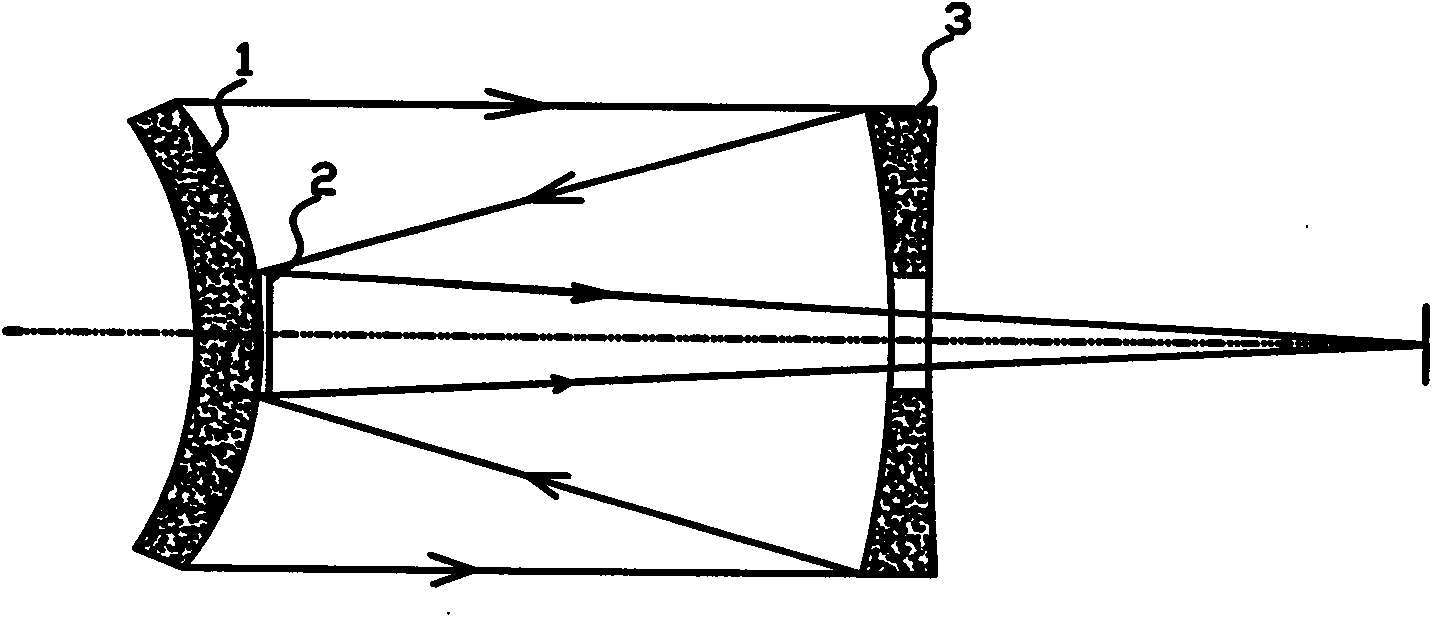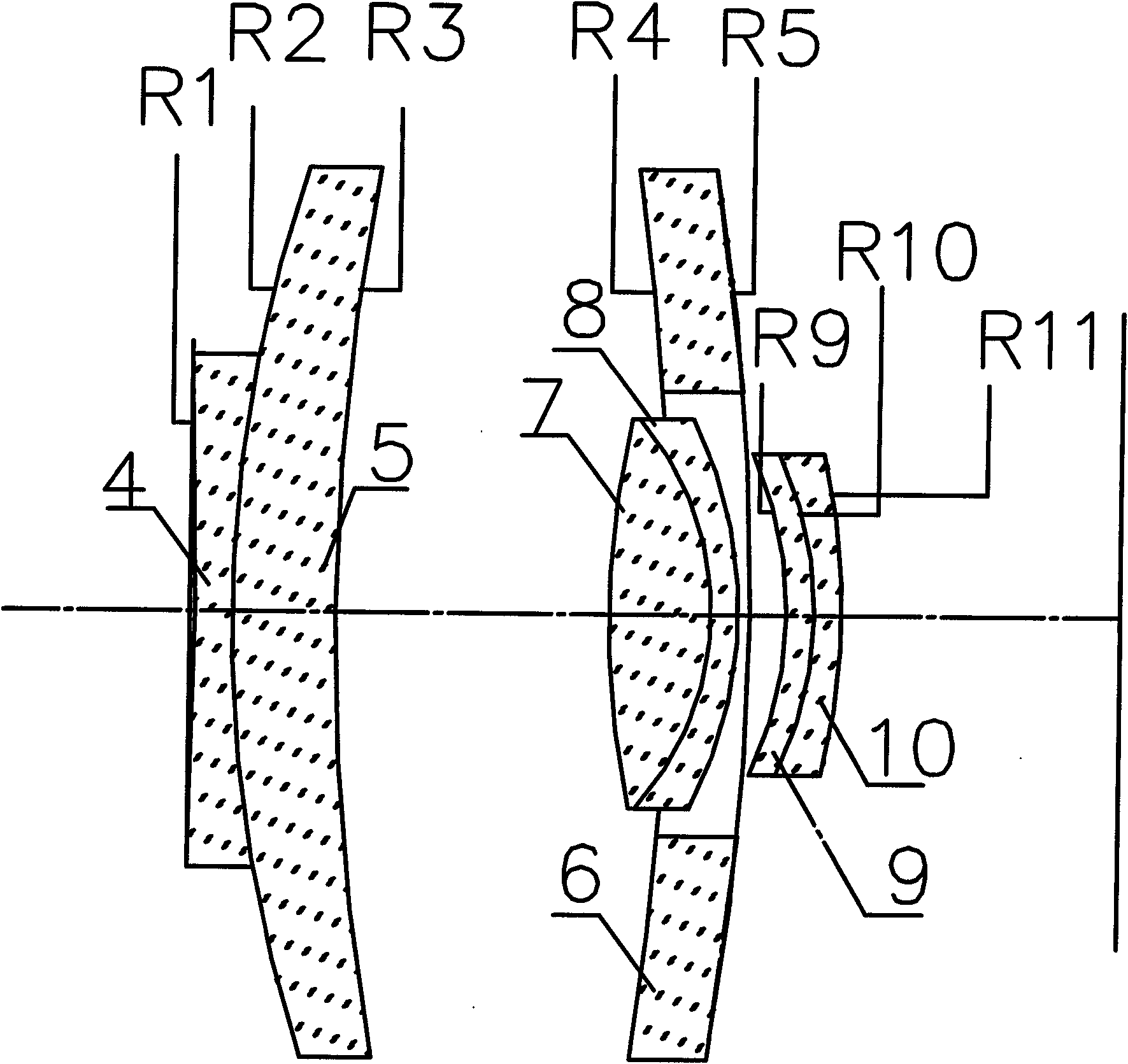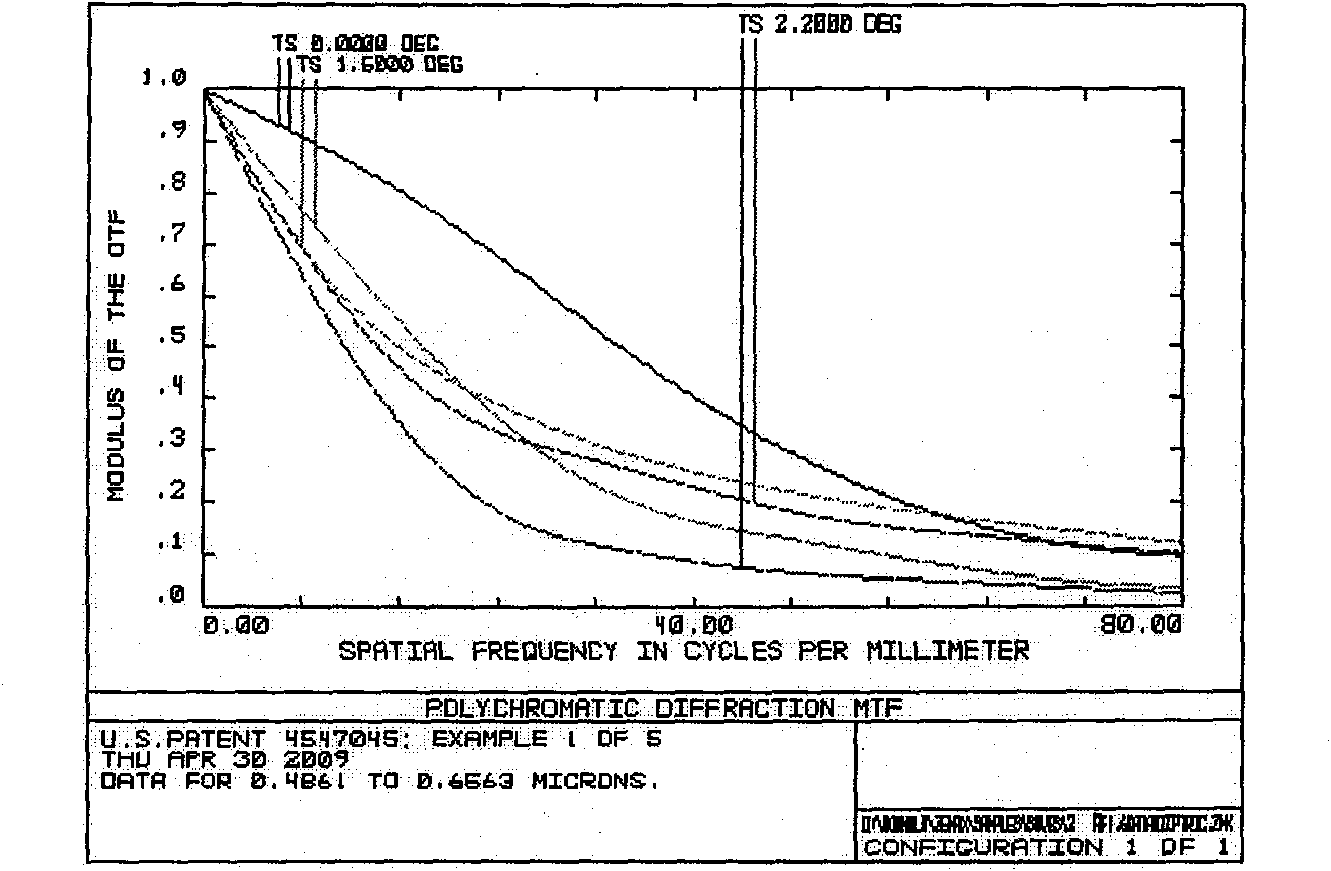Lens
A lens and lens technology, applied in the field of lenses, can solve the problems of insufficient light-gathering ability, increased weight, long lens barrel length, etc., and achieve the effects of improving image quality, being convenient to carry, and reducing the focal ratio value.
- Summary
- Abstract
- Description
- Claims
- Application Information
AI Technical Summary
Problems solved by technology
Method used
Image
Examples
Embodiment Construction
[0017] The present invention will be further described below in conjunction with the accompanying drawings.
[0018] figure 1 Shown is the imaging diagram of the Maksutov telescope, the concave surface of the thick meniscus lens 1 faces the side of the incident light, and the concave primary mirror 3 is arranged behind it. A part of the mirror surface on the convex side of the thick meniscus lens 1 is subjected to vacuum evaporation to form a secondary mirror 2 . The incident light enters from the concave surface of the thick meniscus lens 1 and passes through the secondary mirror 2 and the primary mirror 3 to form an image on the focal plane 4 where the focal point f is located.
[0019] figure 2 It is a schematic diagram of the lens layout of the large aperture, short focal ratio reentrant night vision lens system. In this invention, from the object end to the imaging end are arranged in sequence on the same optical axis:
[0020] A first lens 4 with negative refraction...
PUM
 Login to View More
Login to View More Abstract
Description
Claims
Application Information
 Login to View More
Login to View More - R&D
- Intellectual Property
- Life Sciences
- Materials
- Tech Scout
- Unparalleled Data Quality
- Higher Quality Content
- 60% Fewer Hallucinations
Browse by: Latest US Patents, China's latest patents, Technical Efficacy Thesaurus, Application Domain, Technology Topic, Popular Technical Reports.
© 2025 PatSnap. All rights reserved.Legal|Privacy policy|Modern Slavery Act Transparency Statement|Sitemap|About US| Contact US: help@patsnap.com



